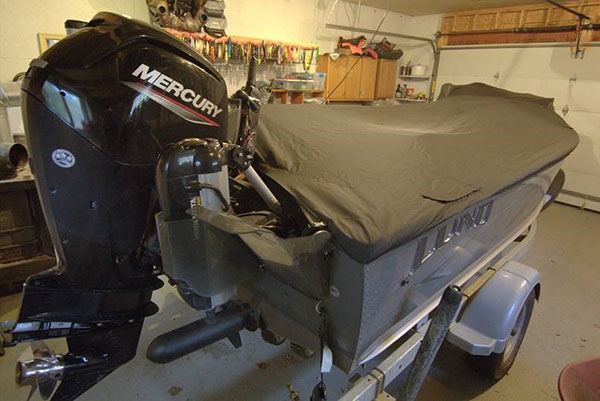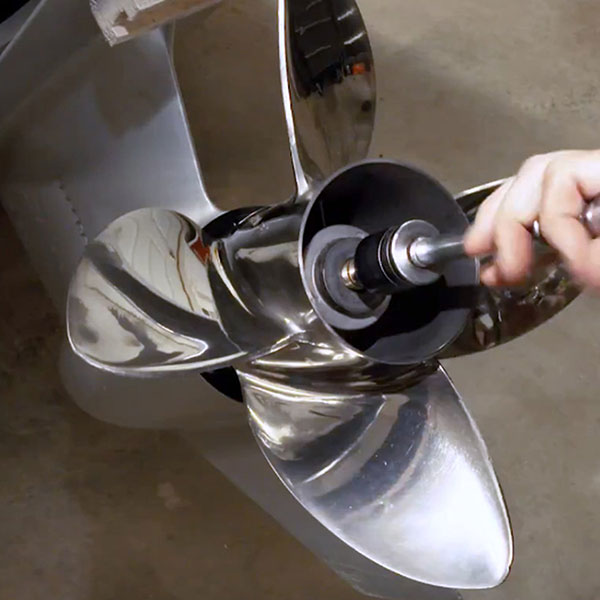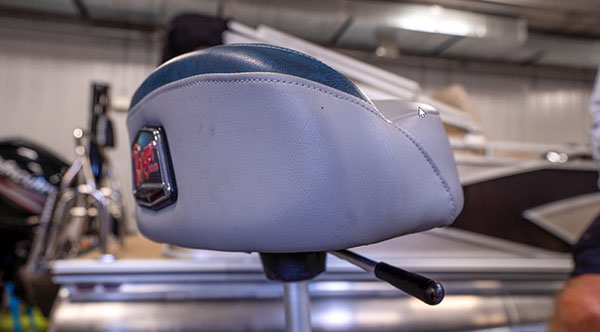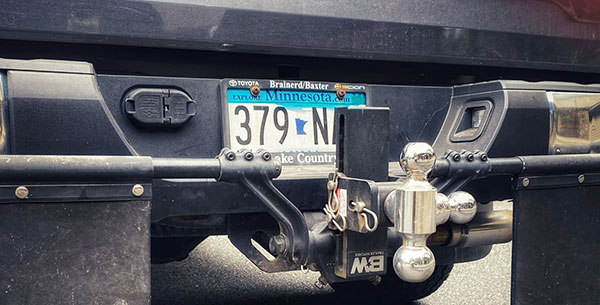- Details
Mercury Report
 Tips for Storing Your Boat for the Winter
Tips for Storing Your Boat for the Winter
No one is ever happy at the thought of stowing away the fishing rods, tackle and fishing boat for the winter months. But facts are facts: It’s about to get too cold for boating in many corners of the nation. That means it’s time to prep the boat and all your gear for winter storage.
Most boats spend the offseason in dry storage on land. While there are several elements to preparing a boat for dry storage, the primary job is to eliminate water from the boat’s systems and keep water from getting in during the ensuing months. Water can add excessive weight to your rig, saturate and ruin fabrics and foams, and cause freeze-damage, which is the greatest risk of all.
- Details
Mercury Report
 Everything You Need to Know to Winterize a Mercury Outboard
Everything You Need to Know to Winterize a Mercury Outboard
Correctly preparing your outboard motor for the off-season will help insure that it’s ready to go next spring. In cold climates, freezing weather can cause costly damage to an engine that isn’t winterized properly.
The end of the boating season is a great time to take care of annual maintenance that will keep your outboard running reliably. Whether you do the job yourself or take your outboard to an Authorized Mercury Marine dealer for service, spending a little time and money today can save a lot of both come spring.
- Details
Mercury Marine Report
 How to Properly Care and Clean Your Vinyl Boat Seats
How to Properly Care and Clean Your Vinyl Boat Seats
A boat’s vinyl seats might look and feel spectacular when the boat is brand new, but they can quickly deteriorate as sun, salt spray, stains, mold and mildew take their toll. Preventive maintenance is the key to keeping your cushions looking great and feeling supple because once mildew or sun damage gets a foothold, it’s difficult, if not impossible, to bring vinyl back to its original glory.
Here’s the good news: Caring for vinyl is simple, and it all boils down to keeping your seat cushions clean and protected from the sun.
Cleaning Boat Vinyl
It’s important to take special care when cleaning modern marine vinyl, which comes from the factory already treated with antimicrobial additives. These do a better job than any aftermarket product at protecting the fabric against mold and mildew, so you don’t want to inadvertently scrub them away with harsh chemical cleaners or a stiff scrub brush. The best practice is to wash down vinyl with gentle soapy water and a soft rag every time you use the boat. If you skip this step, small contaminants will work their way into the vinyl’s surface over time, providing mold and mildew a foothold to begin growing.
- Details
Mercury Report
 Get Hitched Properly When Towing A Boat
Get Hitched Properly When Towing A Boat
Before you get on the water, you must get to the water.
Unless you store your boat at the marina, you’ll need a suitable tow vehicle. Just don’t overlook the hitch. Many people – especially those who have never towed before – assume that a hitch is a hitch and that as long as your vehicle has one, you’re ready to hook up and hit the road. The fact is, hitches can vary widely in terms of weight capacity and application, and all are most certainly not created equal.
To properly and safely tow a boat, you need to ensure that your tow vehicle – be it a truck, SUV or van – is equipped with a suitable receiver-type hitch that is rated to handle both the tongue weight (TW) and gross trailer weight (GTW) of your fully-loaded boat-and-trailer combo. Every hitch is designated with a class rating, from Class I to Class V, and your hitch’s classification, as well as the combined weight of your fully-loaded boat and trailer, are very important things to know.
Hitch Classifications
A Class I hitch is rated for up to 2,000 pounds GTW and 200 pounds TW, so it’s suitable for smaller boats. A Class II hitch has a higher capacity at 3,500 pounds GTW and 300 pounds TW, which is big enough for a small aluminum or inflatable boat. For reference, a trailer loaded with an 18-foot outboard-powered runabout will tip the scale at about 3,000 pounds before you’ve put an ounce of gear or drop of fuel in it. Minivans and smaller SUVs often come equipped with a Class I or Class II hitch.
A Class III hitch is one of the most common hitches, and with its 6,000-pound GTW and 600-pound TW capacity, it’s capable of safely handling the vast majority of trailerable boats on the market. This hitch is best suited for a full-size truck or SUV, and it bolts directly to the frame for a robust and secure connection. The receiver of a Class III hitch typically accepts a 2-inch square insert – also called a drawbar or ball mount – which supports the tow ball and connects the trailer to the hitch.
Class IV and V hitches are also available, but they’re only necessary for very large and heavy boats. Class III, IV and V hitches can also be fitted with weight-distribution systems that can significantly increase the working capacity of the hitch and offer better stability on the road. Weight-distribution systems typically require a special drawbar and adding auxiliary connection points to the trailer. If your boat is heavy enough to require a Class IV or V hitch and/or a weight-distribution system, you’ll likely need a heavy-duty truck to pull it, so be extra mindful of your vehicle’s tow rating.
When buying a hitch, you’ll also need to buy a drawbar and tow ball that carry the same rating as your hitch. If either component is rated for less weight than the hitch, you’ve put a weak link in the chain and therefore reduced your towing capacity to the rating of the lowest-rated component.
A word of caution: The bumper of your tow vehicle might have a hole where a tow ball could be installed. Ignore it. An actual receiver hitch is the only suitable way to tow.




